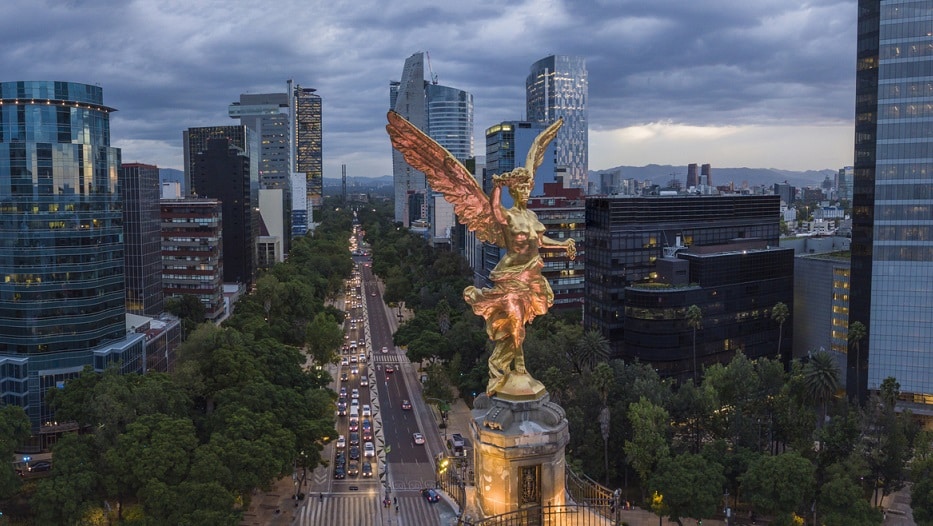Analysis of the situation in the high-risk market, in the current world scenario, seems to be a utopian task, especially against a macroeconomic backdrop where inflation, climate change, and social inequality are determining factors. Therefore, to address this topic it is better to divide the sectors on which to focus a magnifying glass and review those impacts that are affecting or benefiting each one.
The tourism sector is one of the areas anticipating the greatest development, with significant investments in both beach-related and business trip segments, benefiting hotels as well as the retail sector. As a key asset in the tertiary sector, tourism has always been considered strategic and, in more recent years, legislative standards have been set that help to drive development and respect in terms of both the country’s heritage and its natural resources. As recorded by ICEX [Instituto Español de Comercio Exterior – Spanish Institute for Foreign Trade], citing in turn the Ministry of Tourism, the contribution to GDP is around 8.5 – 8.9%. “According to data from the World Tourism Organization (WTO) Ranking 2021, Mexico still managed to position itself in second place as a world tourism destination in 2021 with nearly 32 million visitors, but a long way from the 45 million it received in 2019.”
To conclude with this sector, both domestic and foreign investment have always been very generous. Our neighbor, the United States, ranks first among global investors, focusing capital on properties in the north of the country, while Spain is not far behind: ranking in second place, with hotel projects in coastal destinations.
With regard to the insurance sector, some stability can be seen, however, the reinsurance market is experiencing a lack of capacity and widespread tightening in terms and conditions.
In the Global Risks market, changes or new additions in terms of national and international brokers can be observed, while interest in sustainability is of particular note, where sectors dependent on raw materials present significant challenges over the short term, not only in Mexico, but throughout the world.
According to the Mexican Monthly Industrial Activity Indicator (IMAI),the industrial sector grew by 3.3% in 2022. Breaking down this data by sector, the highest growth was achieved by the manufacturing industry, followed by, among others, electricity, water, and gas supplies, while growth in mining and construction has surpassed half a percentage point.
Investment opportunities
As stated in the Economic and Commercial Report published by ICEX in November 2022, investment opportunities are to be found in public works such as railways and airports or strategic sectors such as automotive and aerospace, “where Mexico is becoming a significant sector globally, a situation that could be further driven by the coming into force of the EU-Mexico Free Trade Agreement (TLCUEM).”
In this summary of business opportunities, notable by its absence, however, is the energy sector. Regulatory changes in recent years “have not helped private investment in continuing to reach this sector,” as uncertainty has hampered the country’s enormous potential for renewables, according to the ICEX report.
Foreign capital plays a very important role in Mexico’s economy and is evident mainly in sectors such as automotive, electronic, pharmaceutical, and chemical. In the case of Spain, the report mentioned above states that “in 2018, Spanish Foreign Direct Investment (FDI) reached a record high, of €5.48 billion. In the period 2000-2021, the accumulated gross Spanish Non-ETVE* investment amounted to €47.753 billion. The last available data corresponds to the January-March 2022 period with €7.8 million.” Specifically, in order to improve business relations, the Spanish Secretary of State for Trade met with Mexican businessmen earlier this year in 2023. And it is the strengthening of agreements between the two countries that is essential since both parties benefit, as the Spanish Ministry of Industry, Trade and Tourism points out:
- Spain is positioned as the second largest investor country in Mexico, both by volume and the number of companies.
- Spain ranks fifth as a recipient of exports, behind the U.S., Canada, China, and Germany.
- Mexico is the main market for Spanish products.
- Mexico also invests in Spain, holding sixth position as an international investor and second position outside the European Union.
In conclusion, Mexico’s current situation allows, as we have seen, its market to be both receptive to investment as well as to being an investor. Without a doubt, bilateral trade agreements and maintaining certainty, even with new legislation, will be determining factors in creating the conditions for these numbers to increase. Of course, the outlook for 2023 is optimistic.
[* ETVE: Entidades de Tenencias de Valores en el Extranjero – Foreign Securities Holding Companies].
Our collaborator is…

Ismael Campos Rodríguez, Technical Director for Global Risks in MAPFRE México.
Keep reading… Growth outlook for the insurance market in Brazil




